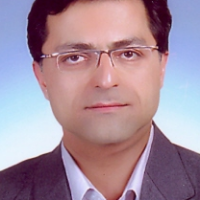Evaluation of Seasonal Variation on the Health Risks Using the Quantitative Microbial Risk Assessment Approach in a Wastewater Treatment Plant in Hamadan, Iran
Wastewater treatment plants (WWTPs) are a source of airborne bacterial contamination that can pose health risks to staff. The aim of this study was to evaluate seasonal variations in the health risks of exposure to Staphylococcus aureus bioaerosols using the quantitative microbial risk assessment (QMRA) approach in a WWTP in Hamadan, Iran. Study Design: This was a descriptive cross-sectional study.
This study determined the emission concentrations of S. aureus bioaerosols in summer and winter. Then, the health risks of three exposure scenarios (the worker, field engineer, and laboratory technician) were evaluated using the QMRA approach. The bioaerosol samples were collected every 12 days in both summer and winter of 2021 with a nutrient agar using a single-stage cascade impactor (Quick Take 30, SKC Inc.) in both outdoor and indoor environments.
The results demonstrated that in both seasons, S. aureus bioaerosol concentrations in outdoor and indoor environments were below the standard established by the American Conference of Governmental Industrial Hygienists (500 CFU/m3). While in summer, the annual infection risks and the disease burden for the three exposure scenarios in both outdoor and indoor environments were higher than the United States Environmental Protection Agency (≤ 10-4 pppy) and the World Health Organization (WHO) (≤ 10-6 DALYs pppy-1) benchmarks, respectively.
The findings provided high health risks for staff in the three exposure scenarios of an indoor environment, which should not be ignored, as well as emphasizing the use of the QMRA approach to estimate health risks caused by occupational exposure to bioaerosols and taking executive measures to protect staff working in the WWTPs.
-
Hollow Polymer Nanospheres and Fe3O4@TFPA-Bd-COF as a Mixture Adsorbent in Microextraction by Packed Sorbent for Extraction of BTEX Biomarkers in Urine
Nematullah Kurd, Abdulrahman Bahrami *, Abbas Afkhami, Farshid Ghorbani Shahna, Mohammadjavad Assari, Maryam Farhadian
Analytical and Bioanalytical Chemistry Research, Spring 2023 -
Application of Arc-GIS for zoning of occupational exposure levels to respirable crystalline silica in crushing factories
*, Farshid Ghorbani Shahna, Ali Poormohammadi, Ebrahim Chavoshi, Zahra Karami
Journal of Occupational Hygiene Engineering,


